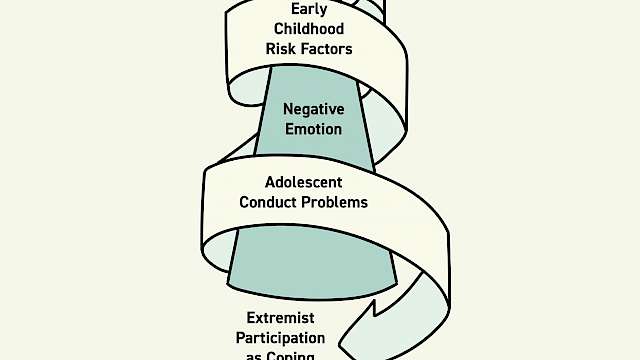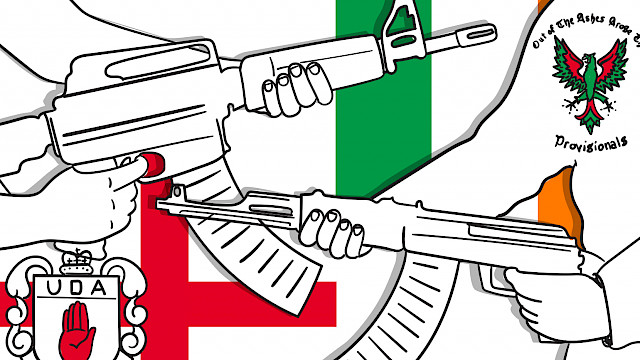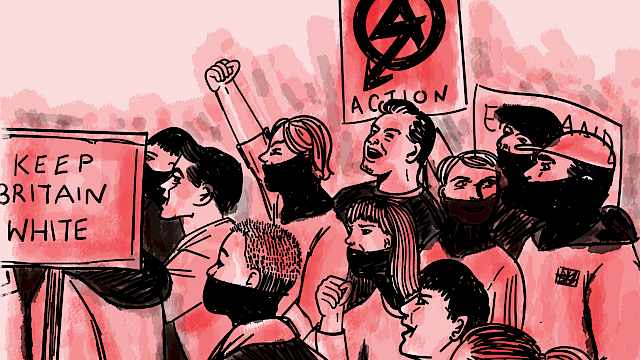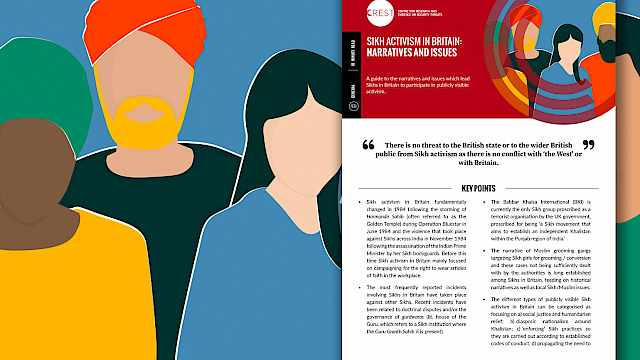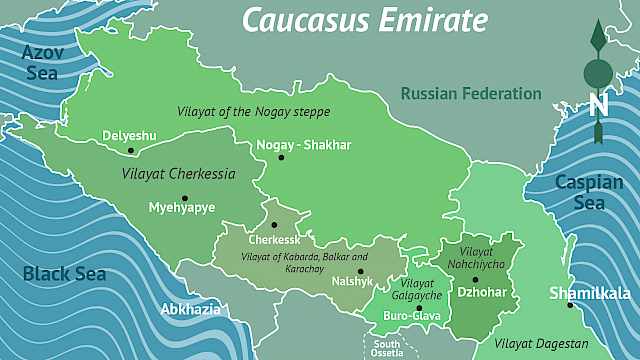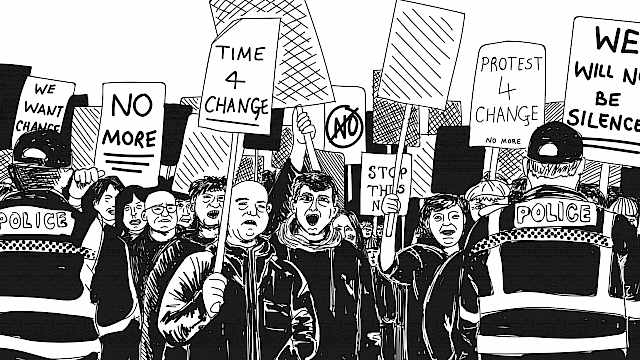Beliefs & Ideology
Academic Publications
Staying Engaged in Terrorism: Narrative Accounts of Sustaining Participation in Violent Extremism
Research exploring radicalization pathways and how and why people become involved in terrorism has expanded since the 9/11 attacks. Likewise, over the last decade research exploring de-radicalization and desistence from terrorism has grown and expanded in an attempt to promote exit from extremist or terror groups.
However, research studies on how individuals sustain engagement in terrorism and their involvement with extremist organizations, often in the face of great adversity, are absent from the body of research.
To address this scarcity of research this study analyzed accounts of engagement in violent extremism produced by Northern Irish loyalist and republican paramilitaries in order to explore how their paramilitary lifestyle, perpetration of acts of political violence and the pressure from countering threats posed by rival groups, and the State security forces impacted on them.
The analysis utilized a hybrid of thematic analysis and interpretative phenomenological analysis (IPA). The themes raised through the analysis reflected the psychological, social and economic hardship associated with this lifestyle. The narrative accounts also illustrated psychological changes associated to engagement in violence and from insulation within tightly knit extremist groups.
As most of the participants faced incarceration during their paramilitary careers, themes also reflected on the impact imprisonment had on them. The themes explored factors that sustained their involvement, including the role of identity development and identity fusion in sustaining their extremism, the impact of insulated group membership, feelings of efficacy, dehumanization processes, community support, and beliefs in the utility of violence.
(From the journal abstract)
Neil Ferguson & James W. McAuley, 2020. Staying engaged in terrorism: narrative accounts of sustaining participation in violent extremism. Frontiers in psychology.
https://doi.org/10.3389/fpsyg.2020.01338
ISIS Propaganda: A Full-Spectrum Extremist Message
This book offers a comprehensive overview and analysis of the Islamic State's use of propaganda.
Combining a range of different theoretical perspectives from across the social sciences, and using rigorous methods, the authors trace the origins of the Islamic State's message, laying bare the strategic logic guiding its evolution, examining each of its multi-media components, and showing how these elements work together to radicalize audiences' worldviews.
This volume highlights the challenges that this sort of "full-spectrum propaganda" raises for counter terrorism forces. It is not only a one-stop resource for any analyst of IS and Salafi-jihadism, but also a rich contribution to the study of text and visual propaganda, radicalization and political violence, and international security.
(From the book abstract)
Stephane J. Baele, Katharine A. Boyd, and Travis G. Coan. 2020. ‘ISIS Propaganda: A Full-Spectrum Extremist Message’. Oxford, New York: Oxford University Press. ISBN: 9780190932459
Between Caucasus and Caliphate: The Splintering of the North Caucasus Insurgency
In December 2014, several high-ranking field commanders from the Caucasus Emirate (Imarat Kavkaz, IK), an insurgent and designated terrorist group in Russia’s North Caucasus, pledged allegiance to the Islamic State (IS). Following the subsequent defection of many of the IK’s surviving commanders, IS consolidated its regional presence with the establishment of a formal branch, the Caucasus Wilayah (IS/CW).
This paper uses Social Movement Theory’s concept of framing to interpret North Caucasus insurgent leaders’ response to the Syrian conflict and identify the differences in the competing factions’ articulated ideologies. It finds that IS/CW leaders have sought to draw on the emotional appeal of the “caliphate” and redirect it back into the local insurgency, while neglecting to articulate alternative tactics or goals.
Those leaders who remained loyal to the IK, by contrast, rooted their opposition in jihadi scholarship and rejected the legitimacy of the “caliphate”. However, apparent ideological differences have been exacerbated by communication difficulties that have hindered leaders’ ability to negotiate internal and external pressures.
This paper contributes to understandings of the differences between the competing factions, illustrates how groups can seek to strengthen their appeal by avoiding explicitness, and demonstrates the importance of operational context in considering ideological change.
(From the journal abstract)
Youngman, Mark. 2016. ‘Between Caucasus and Caliphate: The Splintering of the North Caucasus Insurgency’. Caucasus Survey 4 (3): 194–217. https://doi.org/10.1080/23761199.2016.1215055.
Broader, Vaguer, Weaker: The Evolving Ideology of the Caucasus Emirate Leadership
In October 2007, veteran Chechen field commander Dokka Umarov proclaimed the formation of the Caucasus Emirate (IK), formalising the victory of the North Caucasus insurgency’s Islamist wing over its nationalist-separatists. During Umarov’s time as leader, the North Caucasus experienced sustained violence and the IK claimed responsibility for multiple terrorist attacks in and beyond the region.
However, despite the importance of ideology in understanding insurgent behaviour, the IK’s ideology and Umarov’s role in shaping it remain understudied. Using Social Movement Theory’s concept of framing to analyse Umarov’s communiqués throughout his lengthy tenure (June 2006–September 2013), this article identifies three distinct phases in Umarov’s ideological positioning of the insurgency: nationalist-jihadist (June 2006–October 2007); Khattabist (October 2007–late 2010); and partially hybridised (late 2010–September 2013).
The article contributes to debates over typologies of jihadist actors by highlighting the difficulties in applying them to the North Caucasus and provides a clearer understanding of the IK’s ideological transformation and the limits to its engagement with external actors.
The article also illustrates that weakness was a key factor in explaining that transformation and identifies several avenues for research that could further enhance our understanding of the IK’s ideology and the role it plays.
(From the journal abstract)
Youngman, Mark. 2016. ‘Broader, Vaguer, Weaker: The Evolving Ideology of the Caucasus Emirate Leadership’. Terrorism and Political Violence 0 (0): 1–23. https://doi.org/10.1080/09546553.2016.1229666
The Rise and Fall of the English Defence League: Self-Governance, Marginal Members and the Far Right
What determines the success or failure of far-right organisations? This article uses new qualitative data to explain the sudden rise and subsequent decline of the English Defence League, an anti-Islamic, street protest organisation established in the UK in 2009.
We explain the rise and fall of the English Defence League through the lens of the theory of collective action to show that the English Defence League initially motivated activism by supplying selective incentives that were enhanced by the participation of others.
The pursuit of ‘participatory crowding’ led to indiscriminate recruitment into the organisation that enabled numbers to expand into the thousands, but ultimately caused the English Defence League’s downfall because it resulted in the presence of large numbers of ‘marginal members’ with low levels of commitment whose subsequent exit was decisively destructive.
Self-governance mechanisms to ensure greater loyalty from members could have prevented the English Defence League’s decline but would also have limited its initial success.
(From the journal abstract)
Morrow, Elizabeth A, and John Meadowcroft. 2018. ‘The Rise and Fall of the English Defence League: Self-Governance, Marginal Members and the Far Right’. Political Studies, June. https://doi. org/10.1177/0032321718777907.












